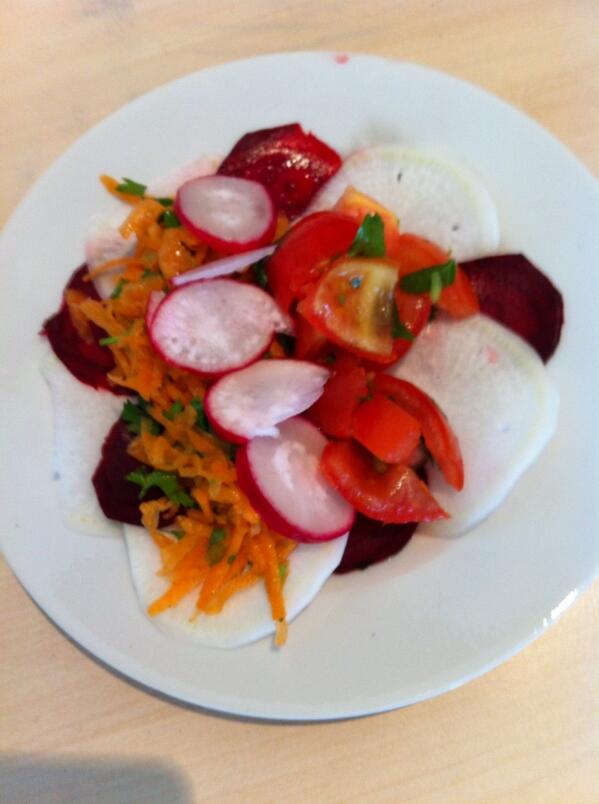Have you ever seen Michael McIntyre's sketch about the spice cupboard? If not watch it, because my description will never ever do it justice. He plays each of the spices languishing in people's cupboards that never get used.
Did you know that spices don't keep forever? Shocking, right?! And they actually lose their potency quite quickly. So it really is use them or lose them. I am against buying masses of spices that you will only use in one recipe. Stick to a basic store cupboard selection, and before adding to it think carefully about whether you will actually use the spice in more than one recipe, or how often you plan to make the one you are buying it for.
My store cupboard essentials are -
Paprika (any variety - sweet, smoked, hot. Or a selection of these)
Chili powder or dried chili flakes
Cumin - seeds or ground, or both if you will use them
Coriander - again seeds or ground
Ginger - as well as frozen fresh ginger in the freezer
Cinnamon
Turmeric
Sumac - just because I love it
These can be bought in more supermarkets, but if you do have an Asian store nearby I would definitely recommend a trip there. My mum and I buy big bags of spices and split them between us, and it is so much cheaper than your normal supermarket.
One of the obvious things to make with spices is a spicy vegetarian chilli. Super easy (don't be fooled by the list of ingredients - it is really difficult to get this wrong) and super delicious. Plus it follows my top tips for reducing food waste - apart from the spices, it is a rough recipe that you could use a selection of veg in, it makes the most of the spice cupboard, and I use some of my frozen food in it too. Tick, tick, tick!
Mix and match the vegetables - I used sweet potatoes and aubergine because I had them, but you could equally use butternut squash, courgette, peppers, carrots, fresh tomatoes. The pulses and lentils add lots of much needed protein!
The pitta chips instead of tortilla chips are much healthier. I always keep pitta bread in the freezer.
1 onion - chopped finely
2 cloves garlic - sliced finely or crushed
2 tsp paprika - mix and match different types. I use regular and smoked.
1-2 tsp chilli powder (depending on strength and how spicy you like it)
1 tsp cumin
1 tsp ginger
1/2 tsp cinnamon
2 sweet potatoes - chopped into bite size pieces
1 small aubergine - chopped into bite size pieces
1 tin of pulses - black beans, chickpeas work well
Handful of red lentils - thoroughly washed in warm water
1 tin chopped tomatoes
1 teaspoon sugar
Juice of half a lime (optional)
Olive oil
Frozen or fresh pitta bread
Preheat the oven to 200. Put the sweet potatoes and small aubergine in a roasting tin, drizzle with olive oil and season. Roast for around half an hour, or until the aubergine is slightly charring.
In the mean time heat a glug of olive in a heavy bottom saucepan or wok. Keep the heat quite low and add in the spices. Stir in the oil for 1-2 minutes, taking care not to burn them.
Add in the onion and cook until softened. Add in the garlic and cook for a further 1-2 minutes.
Stir in the chopped tomatoes and sugar. Turn the heat up a bit to medium, and once the tomatoes are starting to simmer add in a handful of lentils. Thoroughly washing these before hand will stop the froth that you sometimes get when lentils are cooking. You can add some water in at this point to ensure that the lentils cook properly.
Once the lentils are starting to soften, stir in your other pulses and the roasted vegetables. Season with salt and pepper.
Cook for about 5 more minutes until the lentils are soft with a little bit of bite. Squeeze in juice of half a lime if you have it.
Serve with pitta chips and some seasoned mashed avocado and/or creme fraiche/yoghurt.
Pitta chips -
To make the pitta chips, cut the pittas in half in the middle - so you end up with the thin top and bottom of the pitta bread. Does that make sense? I have no idea!
Cut the bits of pitta into triangles, probably around four per half of pitta depending on the size - but roughly tortilla chip size.
Place on a baking tray and drizzle with olive oil. Season with a reasonable amount of crushed sea salt. Pop in a medium heat oven for about 8 minutes, but do keep an eye on them. And then you have delicious pitta chips - great for this, but also with dips at parties!















































